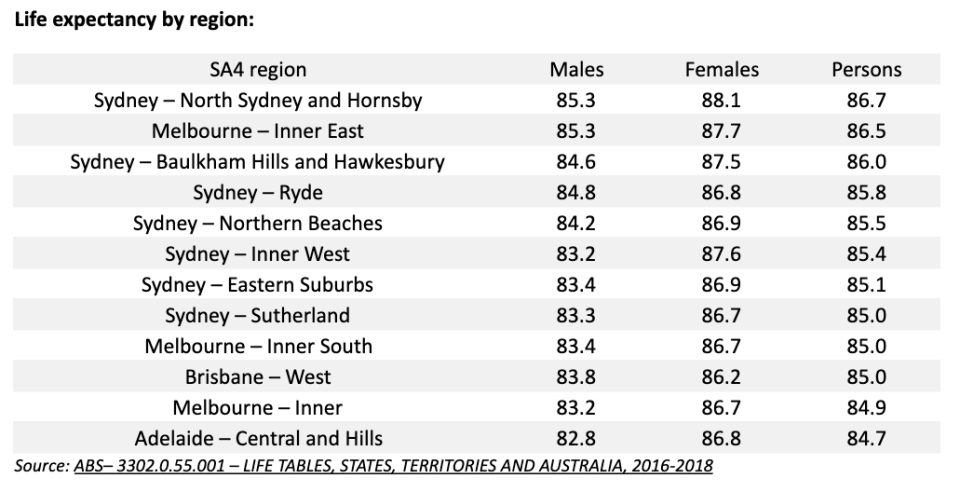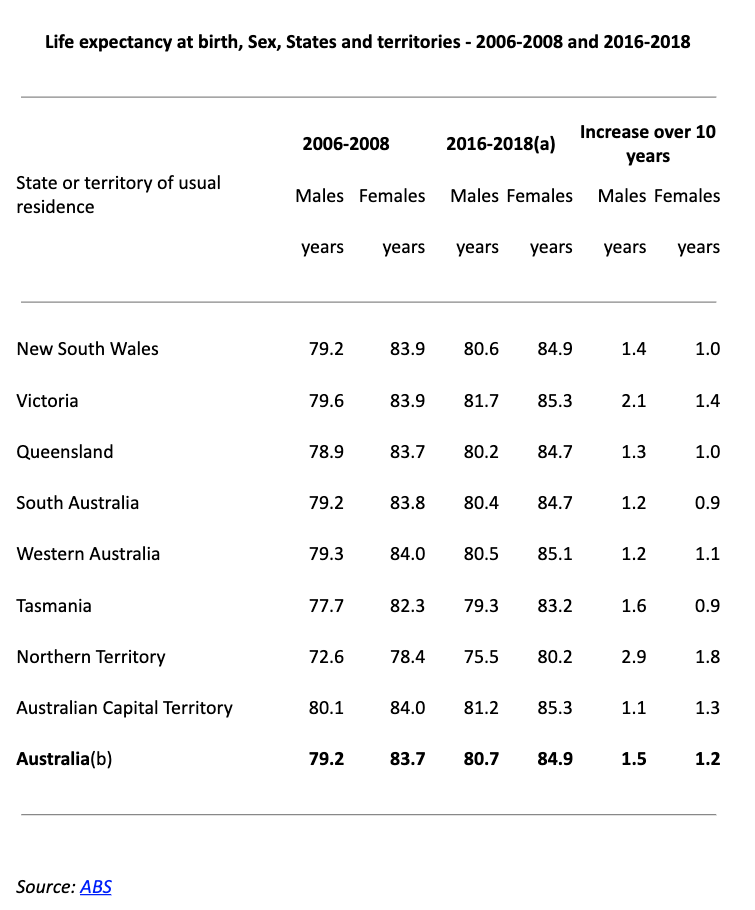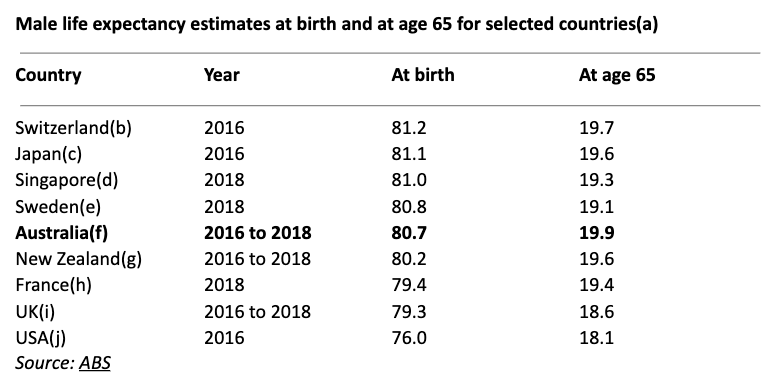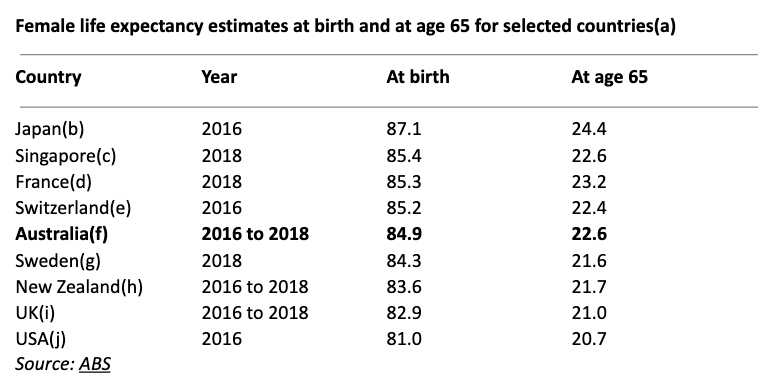The suburbs where Aussies have the highest life expectancy

Life expectancy in Australia has reached record highs with a boy born today expected to live to 80.7 years and a girl to 84.9 years, according to the figures released by the Australian Bureau of Statistics (ABS).
At first glance, it might seem like not much, but dig deeper and there is a much more important story to tell including the fact that where you live affects your life expectancy.
More from Michael Yardney: What we can expect from Australia's property market over the next decade
More from Michael Yardney: 7 money tips to supercharge your finances in 2020
More from Michael Yardney: Then, now and in the future: A glance at Australian property in 2019
So let’s take a look at the numbers…
According to the Australian Bureau of Statistics, in the past 10 years, life expectancy has increased by 1.5 years for males and 1.2 years for females in Australia.
This increase in life expectancy at birth reflects declining death rates at most ages and represents the average number of years that a newborn baby could expect to live, assuming current age-specific death rates are experienced through his/her lifetime.
What’s interesting with the latest data is that in recent years life expectancy for males has improved at a faster rate than that for women.
Perhaps as men finally start to take responsibility for some of their less than healthy habits such as smoking or a bad diet.
Around 50 years ago (1965-67), life expectancy at birth in Australia was 67.6 years for males and 74.2 years for females, a gap of 6.6 years.
The gap has now narrowed to 4.2 years in 2016-2018.
Of course, some of the reasons for improvements in life expectancy include, but are not limited to, improved health services, safer working environments, and medical and technological advances.
Where we live matters
What I found more interesting from the data, though, was that there were significant differences in life expectancy depending on where you live.
In short – or long as it seems to be – our nation’s most affluent areas also boast the highest life expectancy rates.
Clearly, some of the reasons for this is that residents in these locations generally have professional vocations, which creates less of a tax on their bodies over the years.
On top of that, they generally have more funds available for medical treatment when needed.

There are also differences between states and territories as well, with Victoria coming out on top for life expectancy and the Northern Territory at the bottom.
In essence, the exact opposite of their geographical locations in Australia!

Where do we rank in the world?
There is no question that Australians are living longer than they ever have before.
In fact, our average longevity is now among the best in the world!
While the Swiss and Japanese have the highest life expectancy for males in the world, Aussie men are not far behind at number five.
Indeed, our average is only a minuscule half a year behind the world leaders, which is hardly here nor there when you’ve been alive for eight or more decades.

Australian women also took out the number five spot in female life expectancy estimates at birth at 84.9 years, just a handful of years fewer than in Japan

What does it all mean?
Like all statistics, you can see what you want to see in these numbers, and I’m guessing most of us are happy that we have a few more decades of life ahead of us.
However, it should also remind us we’re living in the best country in the world at the best time in history.
Make your money work with Yahoo Finance’s daily newsletter. Sign up here and stay on top of the latest money, news and tech news.

 Yahoo Finance
Yahoo Finance 
